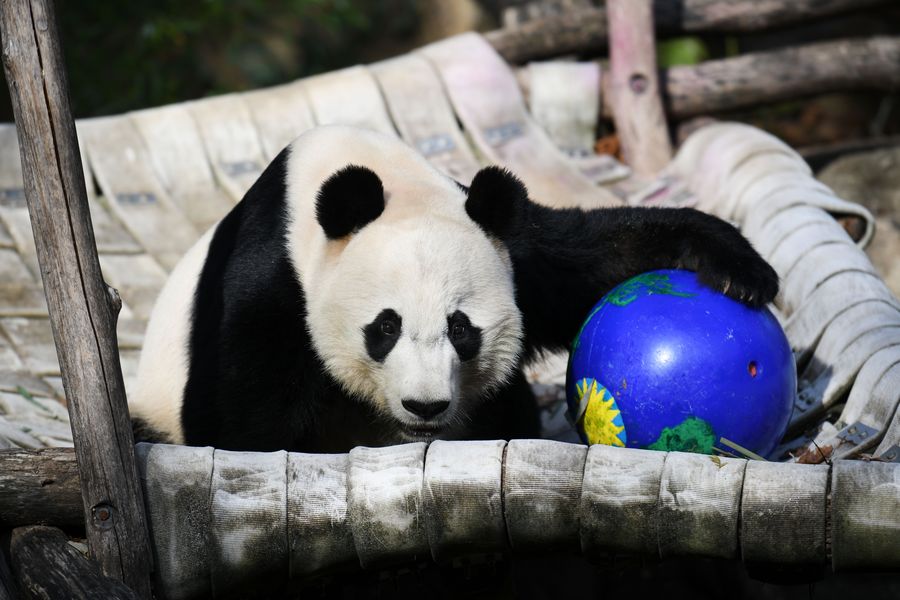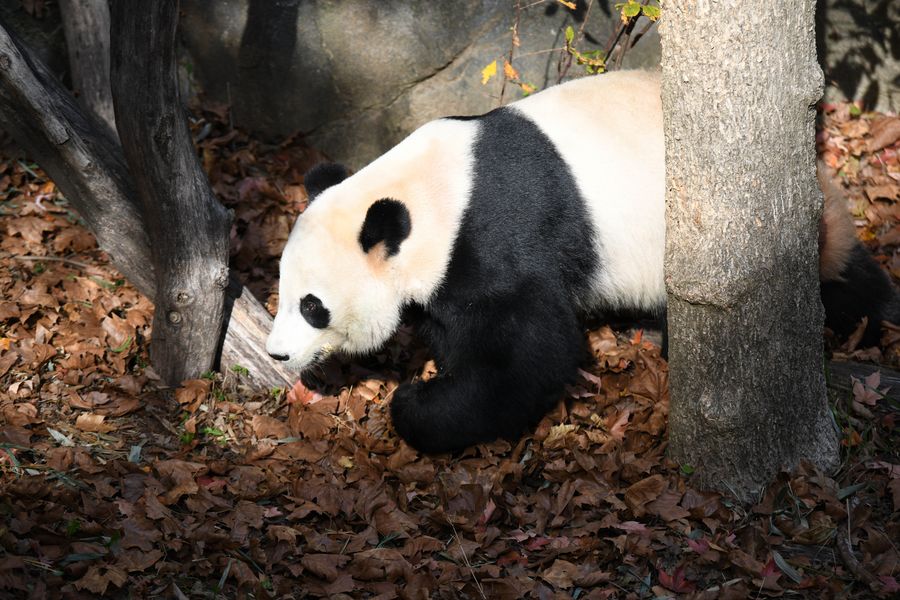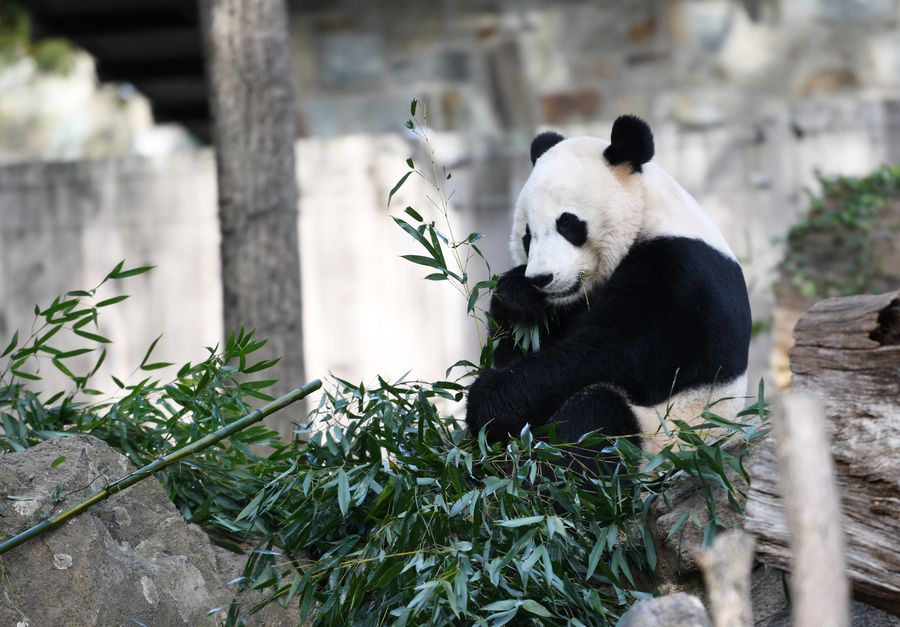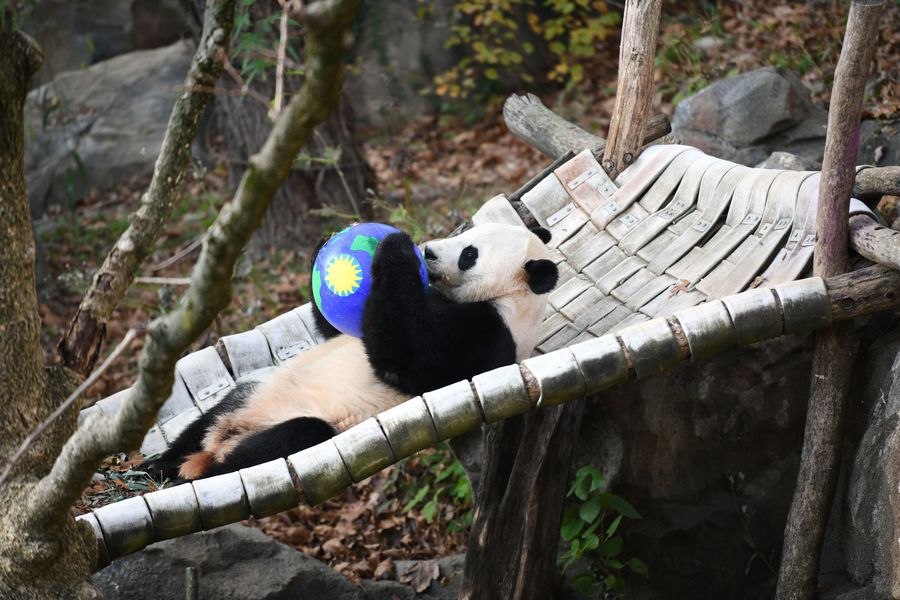
U.S.-born male giant panda Bei Bei is seen at the Smithsonian's National Zoo in Washington D.C., the United States, on Nov. 11, 2019. (Xinhua/Liu Jie)
"Giant pandas here at the national zoo are celebrities. They are rock stars," said a spokesperson for the Smithsonian's National Zoo. "We have a lot of people who are going to be coming to wish Bei Bei a fond farewell."
WASHINGTON, Nov. 11 (Xinhua) -- A weeklong farewell party for U.S.-born male giant panda Bei Bei, who is to depart the Smithsonian's National Zoo for China later this month, kicked off here on Monday.
Bei Bei's departure, scheduled for Nov. 19, is part of the U.S. national zoo's cooperative breeding agreement with the China Wildlife Conservation Association that all cubs born here shall move to China after the fourth birthday. Bei Bei turned four on Aug. 22.
An online and on-site series of "Bye Bye, Bei Bei" celebratory events were running on Monday through next week, allowing giant panda lovers to bid a farewell to Bei Bei before he starts the next chapter of his life.

U.S.-born male giant panda Bei Bei is seen at the Smithsonian's National Zoo in Washington D.C., the United States, on Nov. 11, 2019. (Xinhua/Liu Jie)
At a postcard station next to Bei Bei's outdoor habitat on Monday morning, his fans were taking turns to write a farewell note that will travel with him to China.
Angela Wessel, a giant panda lover and zoo volunteer, told Xinhua she's going to miss Bei Bei a lot, adding that she plans to travel to China next year to visit him.
Bei Bei appeared to be in a light mood, wandering around in his habitat before sitting down to lazily chew bamboo. He also climbed a tree like he always does, delighting his visitors.

U.S.-born male giant panda Bei Bei is seen at the Smithsonian's National Zoo in Washington D.C., the United States, on Nov. 11, 2019. (Xinhua/Liu Jie)
His mother Mei Xiang and father Tian Tian, who arrived in Washington D.C. in late 2000, live next door. Bei Bei's brother Tai Shan and sister Bao Bao moved to China respectively in 2010 and 2017.
"Giant pandas here at the national zoo are celebrities. They are rock stars," said Annalisa Meyer, a spokesperson for the zoo. "We have a lot of people who are going to be coming to wish Bei Bei a fond farewell."
Preparation for Bei Bei's journey started last month, which included acclimating him to a travel crate used for his flight.
Assistant curator Laurie Thompson, who will travel with Bei Bei to China, said the giant panda was doing very well with the crate.
"The first time you saw he was a little nervous, but now he goes in there and sits down and eats and seems very happy," Thompson said.
When departing for China, Bei Bei, with a supply of his favorite treats, will be accompanied by Thompson and a veterinarian on a non-stop flight to China's Chengdu in a dedicated B777 aircraft by FedEx.
Upon arrival in Chengdu, Bei Bei's new keepers will accompany him to one of the bases run by the China Conservation and Research Center for the Giant Panda, and Thompson will remain with Bei Bei for a short time while he acclimates to his new home.

U.S.-born male giant panda Bei Bei is seen at the Smithsonian's National Zoo in Washington D.C., the United States, on Nov. 11, 2019. (Xinhua/Liu Jie)
Bei Bei will enter the giant panda breeding program when he reaches sexual maturity between five and seven years old, according to the U.S. national zoo.
Dubbed China's "national treasure," giant pandas mainly live in southwest China's Sichuan Province as well as neighboring provinces of Shaanxi and Gansu.
The latest census in 2014 found there were 1,864 giant pandas alive in the wild, up from 1,114 decades ago. The number of pandas bred in captivity reached 548 globally as of last November, according to China's National Forestry and Grassland Administration.
Giant pandas are solitary in the wild, and cubs separate from their mothers to establish their own territories between 18 months and two years old. ■



